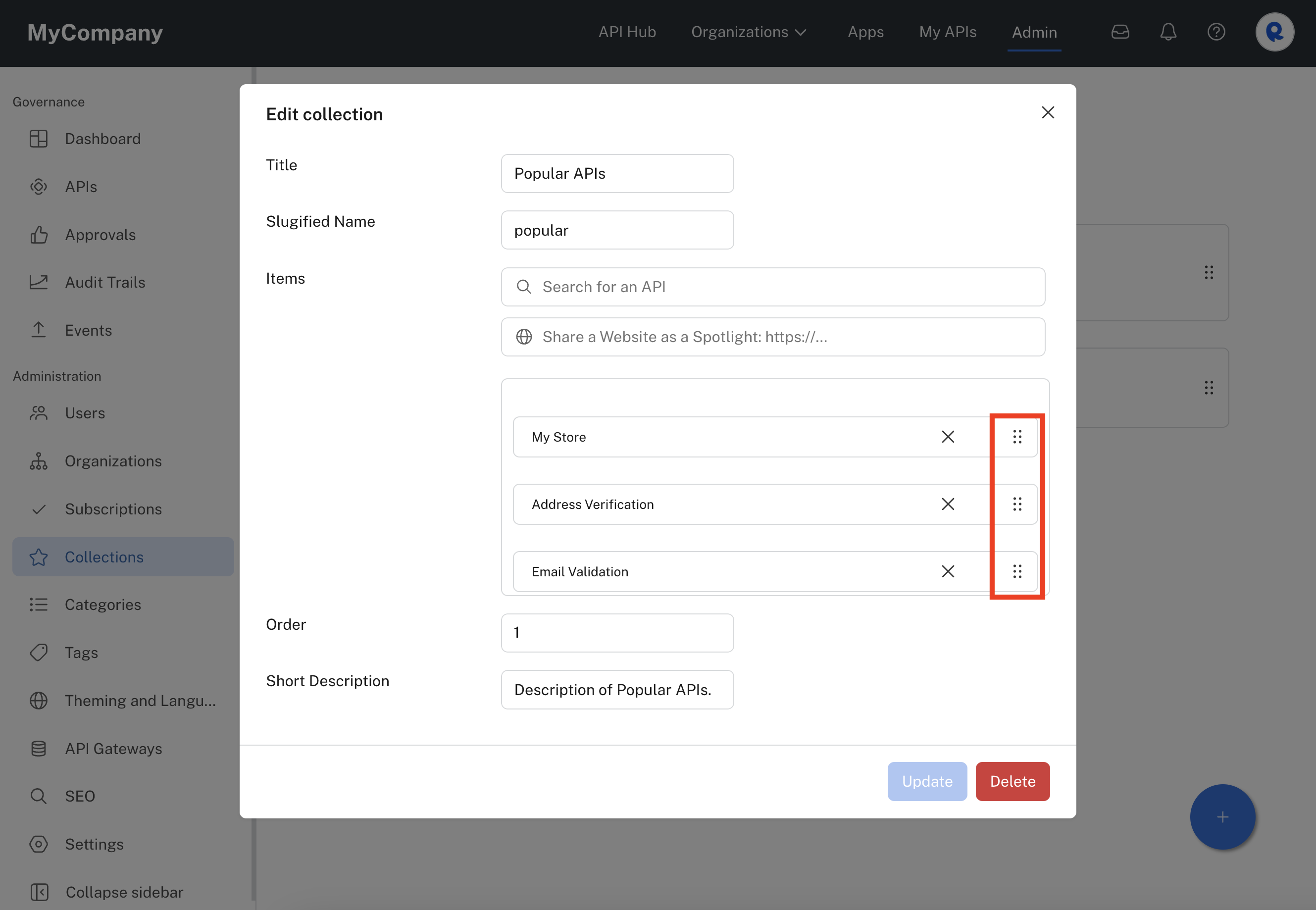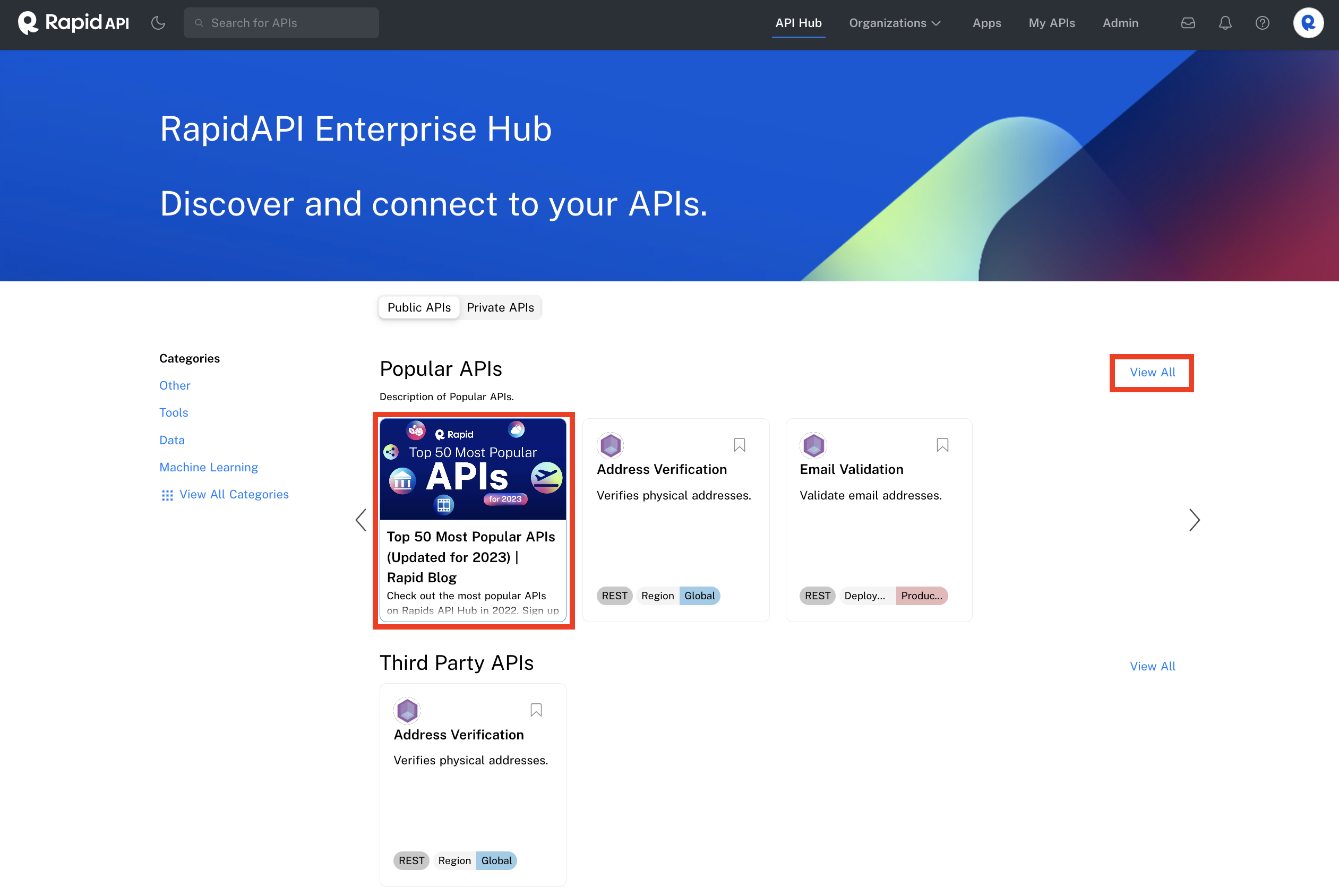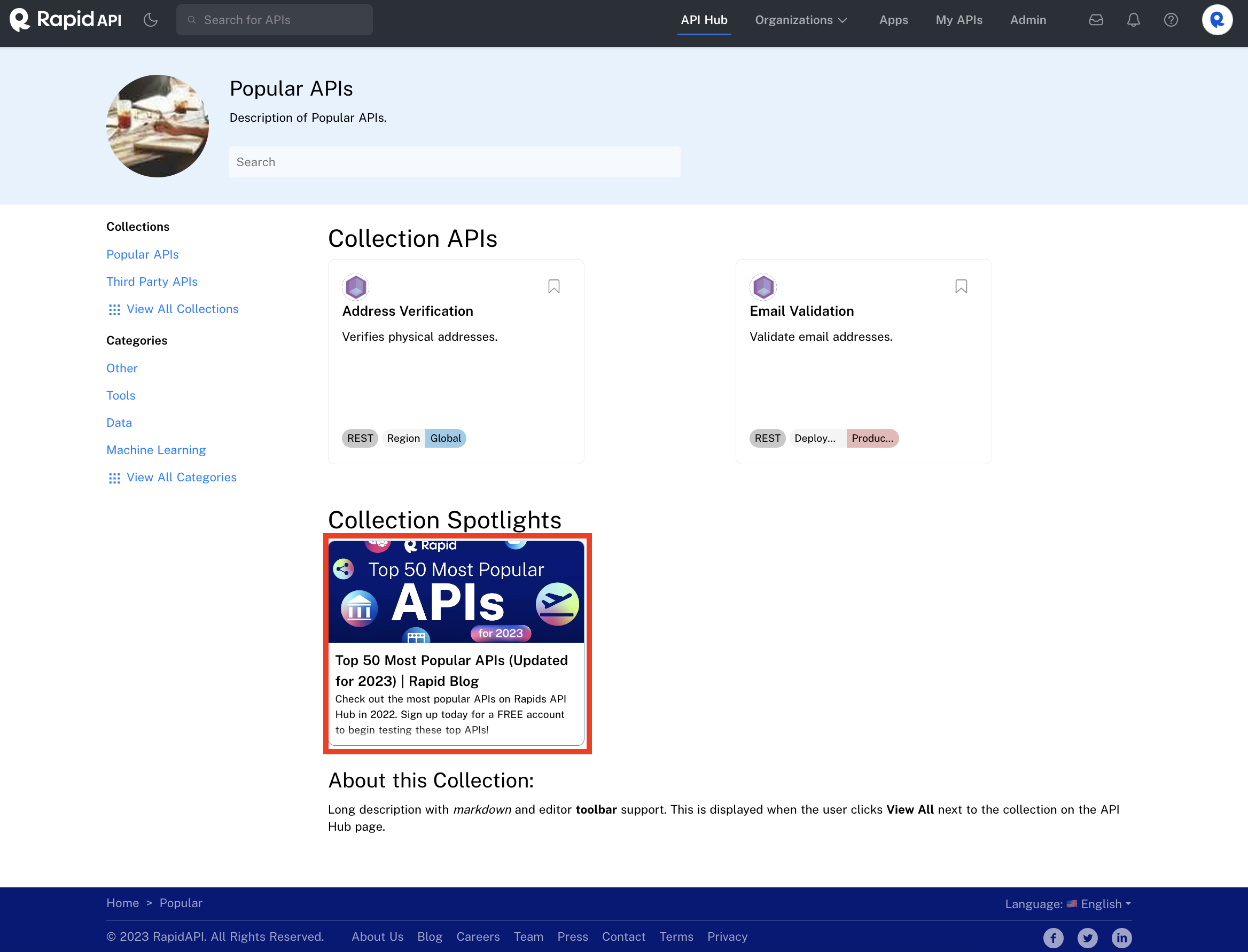Collections
Create groups of public APIs to display on the API Hub page.
API collections can be used to group together public APIs with a common characteristic.
An API can appear in multiple collections
It is possible for one API to appear in multiple collections. This is unlike API Categories, where an API can only have a single API category associated with it.
APIs in a collection must be public
Only public APIs and spotlights can appear in collections. Private APIs can not be displayed on the API Hub page collections.
Creating and editing collections
To create an API collection, first navigate to your Admin Panel, then select the Collections tab.
Under the Collections tab, select the + in the bottom right corner.

Admin Panel Collections tab.
Editing and deleting collections
To edit a collection, click the collection name on the Collections tab (see screenshot above). Then click Edit and add or modify your details. Make sure to click Update after editing a collection.
You can change the collection's display order/weight by dragging and dropping the six dot icon to the right of each collection name (see screenshot above).
You can delete a collection by clicking the collection name bring up the Edit collection dialog and then clicking Delete.
You can define the following information:
| - Title The name of the collection. This will be displayed on the API Hub page and when the user clicks View All next to the collection on the API Hub page. |
| - Slugified Name Primarily used for search engine optimization (SEO) purposes and generates the URL to access the collection. |
| - Items The list of public APIs and spotlights (see below) that will be grouped together in the collection. You can search for an API and click on it to add it to the collection. You can drag and drop the items to change their order within collection (see screenshot below). The top item is displayed first in the collection. Click the X associated with an item to remove it from the collection. |
| - Order Determines how high on the API Hub page that the collection will be displayed. The smaller the order number, the higher it is displayed. For example, an order of 1 will display at the top of the page. The relative order of collections can also be changed by dragging and dropping their order on the main Collections tab in the Admin Panel. |
| - Short Description (Optional) Appears as a subheading for the collection title on the API Hub page and when the user clicks View All next to the collection on the API Hub page. (see the last two screenshots below) |
| - Long Description Displayed at the bottom of the API collection details page (see the last screenshot below). This field supports markdown and the editor has convenient toolbar support. The API collection page is displayed when the user clicks View All next to the collection on the API Hub page. Adding a good detailed description to the collection can help users make better use of the collection. This can also be used for search engine optimization (SEO) to increase the ranking of the API collection in organic searches for hubs made public. |
| - Image Displays when the user clicks View All next to the collection on the API Hub page (see the last screenshot below) |

Drag and drop to change the order of Items. The top item appears first in the collection.

Specifying the collections Order on the API Hub page, descriptions, and Image.
Collection spotlights
When grouping together specific APIs, you may want to include related resources such as blogs or tutorials. These can be helpful when exploring the API collection. Collection spotlights enable you to embed external url links within an API collection.
To add a collection spotlight, add or edit the collection and in the Share a Website as a Spotlight... text area in Items field, enter the URL in the following format:
https://YOUR URL
Click the website that resolves to add the item to the collection (see screenshot below). You can drag the spotlight to the top of the Items if you want the spotlight to be shown first on the API Hub page (see the second screenshot below).

Adding a spotlight to a collection.
Once a spotlight has been added to a collection, it will be display as a card within the collection on the API Hub page.

A spotlight added to a collection. Click View All to see collection details.
If the API consumer clicks View All next to the collection (see above), they will see the collection under Collection Spotlights (see below).

Collection spotlights when viewing a collection's details.
Updated 5 months ago
